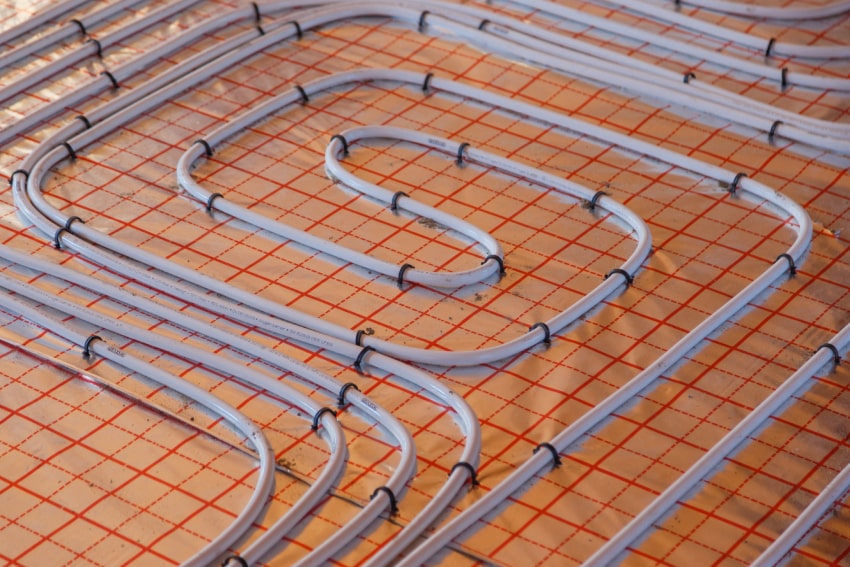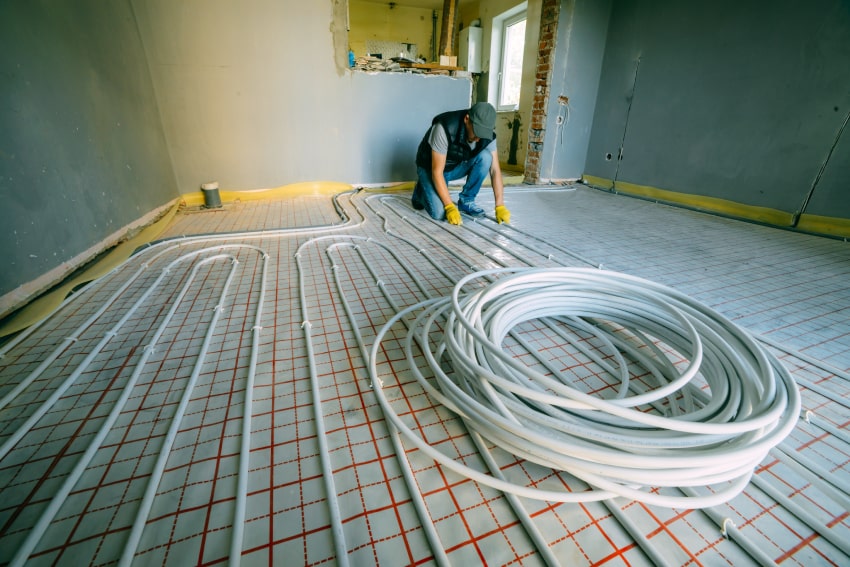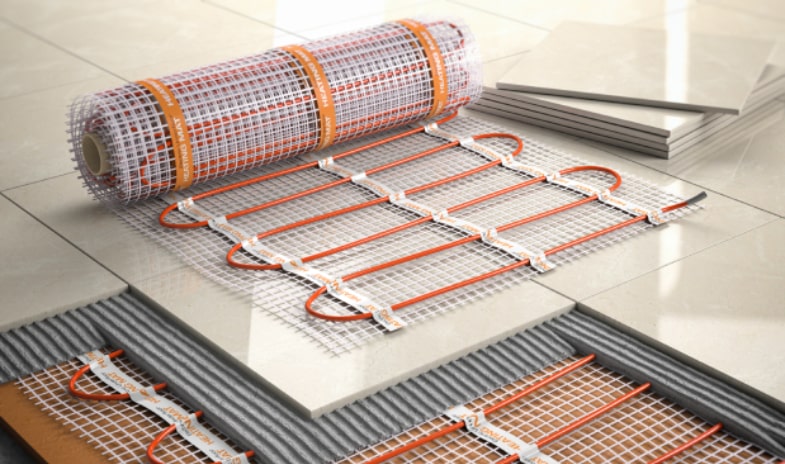Radiant floor heating sounds like the perfect home improvement to help you cope with those chilly Calgary winters. But before you get carried away with dreams of delightfully warm bedroom and bathroom floors, take the time to investigate and gather information about this heating system for your home.
What are the pros and cons of installing radiant in-floor heating systems, and how do they balance out? Is in-floor heating worth it?
How Does In-Floor Heating Work?
An in-floor heating system works by being controlled by a thermostat — we recommend a programmable or smart thermostat — and heats the flooring, not the air like furnaces and baseboard heaters do. The heat then travels upwards (warm air rises, remember?) to warm up your entire room. It is especially popular for bathroom heating. The two most commonly used types of radiant heating are electric and hydronic, or water-based.

Electric In-Floor Heating
Electric heated floors work using electric cables installed underneath your finish flooring. With electric floor heating, the cables are hardwired to your home electrical system.
Hydronic In-Floor Heating
Hydronic radiant floor heating system works using tubes beneath the flooring. In hydronic systems, water is heated in a boiler (if you already own a boiler, you’re in luck — otherwise, you’ll need to have one installed). The hot water then circulates under the floor through a network of tubing.
Pros Of Radiant In-Floor Heating
Maximum Home Comfort
There’s nothing like the comfort you get with radiant heating systems. Even on the coldest Calgary morning, you’ll look forward to getting out of bed since your bare feet will touch down on a comfortable, warm surface, and you’ll head to a refreshing shower in a cozily heated bathroom.
You’ll also enjoy the comfort of a uniformly heated room without the cold spots and temperature swings usually experienced with forced air heat. Plus, your air quality will improve once your home no longer has the drying effect of most furnaces.

Safe With Flooring Material
Radiant floor heating is safe to use with virtually all finish flooring materials, although it is most compatible with concrete, ceramic and porcelain tile, or stone floors. Engineered wood is preferable to natural hardwood, which may pose a fire hazard.
In addition, carpet, a natural insulator, may block the heat from circulating properly and become a potential fire hazard. We are happy to talk with you about the best flooring material to install with your new electric or hydronic floor heating.
Warranty
In-floor heating tends to last a while, but a solid warranty can be a good cushion if something malfunctions. Many in-floor heating products offer a generous warranty, often for periods of up to 25 years. But, of course, you should check out the terms and conditions to see exactly what is covered and for how long.
Energy Efficient
Heated floors provide greater energy efficiency than forced air systems because there is no ductwork involved. That means no heat loss and less energy consumption. What’s more, electric in-floor heating offers an additional way to save electricity and control your energy costs—this type of system warms up quickly, within 30 to 60 minutes. As a result, you can fine-tune your heating, adjusting the temperature according to which rooms are currently in use.
Quiet Heating
You won’t be disturbed by all those weird noises that your old furnace used to make: no more noisy start-up or whirring and banging mid-cycle. Radiant floor heating is totally quiet.
Cons Of Radiant In-Floor Heating
Cost Of Installation
No matter how handy you may be, this is one project that you should not attempt to do yourself. To install heated floors, you will have to hire a professional electrician with specialized training.
You’ll also need to remove and replace your existing flooring (unless it’s possible to install electric radiant heating beneath the joists, from the basement or crawl space). As a result, you can expect the cost to install radiant heating to be relatively high.
Floor Height Problems
In-floor radiant heat systems will raise your floor height a small amount. Electric heated floors tend to increase height by approximately half an inch, while hydronic heating adds somewhat more. If you use a membrane or insulation boards, they will also add height. You might want to use a threshold or transition strip between areas with different flooring heights—for example, between a bathroom with in-floor heating and the hallway.
Time Of Installation
The time required to install radiant floor heating can be a major drawback. Finish flooring or subflooring which contains Portland cement will need to cure for approximately 28 days before the heating system can be put in place. Tile grout may also need a curing period. All this may mean a long wait before your heated bathroom floor is finally ready.
A Certified In-Floor Heat Installer For Best Results
Underfloor heating installation is a worthwhile investment, and we’re here to help make it as cost-effective as possible. Make sure you get your money’s worth — in Calgary, choose Sun Electrical, a certified installer of NuHeat in-floor heating systems.





